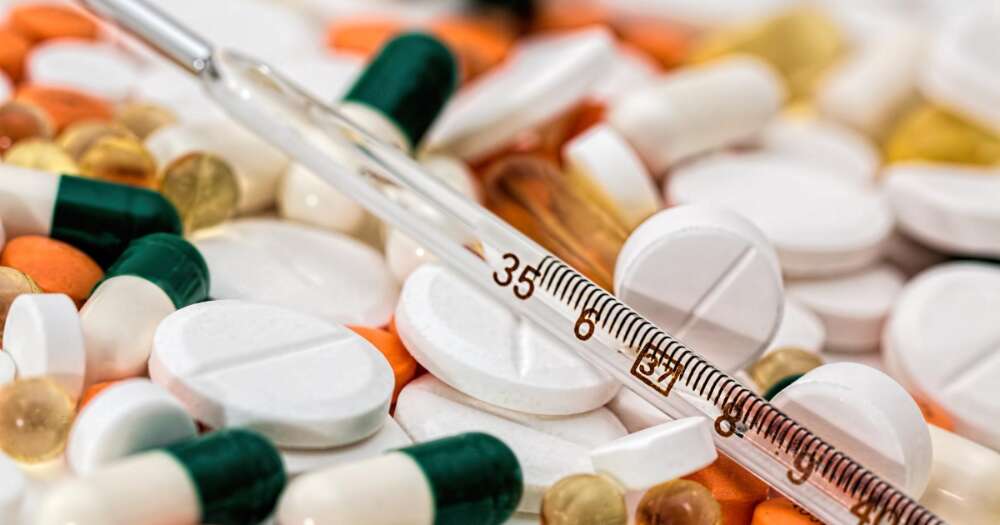Bitter aftereffects
Though steroids are essential in fighting infectious diseases, the second wave of the pandemic has shown their overuse can have lethal side-effects

Ajit, a 45-year-old graphics designer in New Delhi, tested positive for the novel coronavirus in mid-April during the second wave of the pandemic.
"Though my symptoms were mild, I reached out to a doctor as I wanted to cover my bases," he said. The doctor promptly prescribed him steroids with a cocktail of antibiotics and antivirals.
Three months later, Ajit and his doctors are painfully aware of how much this decision, which seemed sensible then, has cost him. Ajit now battles against a host of new health complications, likely triggered by the steroids that had gained popularity as a life-saver during the pandemic.
While treating infectious diseases, doctors usually monitor two important aspects: the viral or bacterial load in the body and the immune system's response to it.
The immune system, which is the sole fighter in the cases of COVID-19, does not have any prior experience of eliminating the virus. So, there is a risk that the immune system could get hyperactive while trying to fight off the contagion, and that the resulting inflammatory response assumes a severe form.
In case of an acute infection, the inflammatory reaction can even damage the body's healthy tissues and organs, a condition known as cytokine storm that has entered common parlance since the onset of the pandemic.
The guidelines of the Union Ministry of Health and Family Welfare say COVID-19 patients should be prescribed steroids only if they enter hypoxia — a condition where oxygen saturation levels report a sudden and drastic fall and which usually sets in during the second week of the infection.
Ajit was, however, prescribed medrol — the commercial name for the steroid methylprednisolone — within the first couple of days of showing symptoms, despite the fact that his oxygen saturation levels were at a healthy 95 per cent and body temperature was between 100 degrees Celsius and 101 degrees Celsius.
Over the coming weeks, steroid dosage for Ajit was increased consistently on account of his increasing fever.
In the end, Ajit was on high doses of steroids for 20 straight days. The WHO guidelines on steroid use in COVID-19 patients mention that these drugs can be prescribed safely for only seven to 10 days.
Steroids' dark side
Steroids are essentially synthetic compounds that mimic various natural hormones in humans and act as chemical messengers to regulate basic actions necessary to protect, nourish and maintain the body as well as functions of the reproductive system.
The ones used in the treatment of COVID-19 and other infectious diseases belong to the group of corticosteroids. These are synthetic versions of the hormone cortisol produced by the adrenal glands.
Cortisol helps regulate our metabolism; manages the immune system; regulates blood pressure and blood sugar levels; controls the sleep-and-wake cycle and response to stress; and reduces inflammation.
The functioning of the hormone itself suggests that if used for long, or in high potency, it can result in a range of side effects, from indigestion and sleep disorder to serious complications like diabetes and damaged liver function.
Corticosteroids can also make one susceptible to a range of other avoidable infections like shingles, chickenpox and measles.
Any abrupt discontinuation of the drug causes sudden steroid deficiency in the body and can result in life-threatening conditions like sudden drop in blood pressure or blood glucose level. Yet, in Ajit's case, the steroids were stopped abruptly, rather than being tapered off.
A fortnight after recovering, Ajit realised that he had developed abnormal liver function. Blood tests showed his condition had reached the stage of liver cirrhosis.
If Ajit's treatment regimen sounds familiar, you are likely among the thousands of COVID-19 patients in India who relied on steroids even though their medical condition did not necessitate it.
Unofficial estimates show the sale of corticosteroid drugs increased manifold during the second wave of the pandemic.
There was a sudden surge in the cases of mucormycosis, a rare but aggressive fungal infection that affects the nose, eye and sometimes the brain, and results in the death of 50 per cent of the patients.
Current trends show the surge is higher in those with pre-existing diabetes, those on systemic corticosteroids and in people with COVID-19 infection and those recovering from it.
"Earlier, mucormycosis was seen in patients with uncontrolled diabetes, but the incidence was low. However, due to COVID-19 treatment, there is a significant increase in the number of cases. Several parts of the country are reporting the increase," Randeep Guleria, director of the All-India Institute of Medical Sciences and a member of the country's COVID task force, said in a media briefing mid-May.
Following the surge in COVID-19-associated mucormycosis, the Union Government on May 20 this year issued a directive asking states to declare the spread of the fungal infection as an epidemic.
Steroid abuse during the second wave ended up unnecessarily adding pressure to the already stressed healthcare system. Lancelot Pinto, pulmonologist at Mumbai's PD Hinduja Hospital, said: "Not only were we treating COVID-19 patients, we were also burdened with patients, often from tier II cities, who were suffering from ailments triggered by the misuse of steroids." DTE
Views expressed are personal



